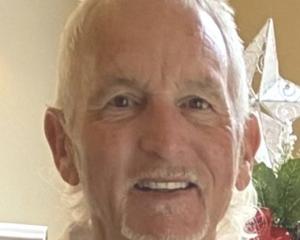There is no denying $1.4billion - the estimated cost of building a new hospital for Dunedin - is a powerfully large amount of money.
However, the alternative to that enormous cost is people's lives.
The most recently released planning documents for the hospital are not as blunt as that, but that is what ``without a new and/or dramatically renovated and refurbished hospital, the DHB will almost certainly fail to meet its long-term service objectives and its commitment to deliver health services to the communities it serves'' boils down to.
In addition, the hospital does not meet earthquake-strengthening regulations. Hospitals are among buildings required to be operational immediately after a quake or other disaster, and Dunedin Hospital does not meet that seismic standard.
Dunedin Hospital is a hodgepodge of buildings erected between 1935 and 1993, few of which meet medical requirements in 2018.
Two of them - the clinical services building and the ward block - are in a parlous state.
A 2012 report suggested the clinical services building had a life of five years. Today, vital departments such as emergency, radiology, the fracture clinic and day surgery struggle to tend to patients in a building which leaks, is full of asbestos and has an outdated and inefficient layout.
The ward block also has issues with leaks and asbestos.
While a solid building, its 1980 layout does not work in the new century. The lifts are too small, stairs are in the wrong place and central plant and fire systems are past their best.
Psychological services is the oldest building in the hospital, and this rabbit warren has also exceeded its estimated usable lifespan.
The Fraser Building also has issues piling up - some staff were briefly shifted out of their offices in the 1940 building earlier this year after mould was found and its estimated remaining service life expires in two years.
The oncology building, opened in 1993, is the sole main hospital block considered to be in acceptable shape - although it is more than a little cramped.
Why a full rebuild though? Why not just carry out a thorough renovation?
That was an option briefly considered, then swiftly discarded.
Repair costs were estimated to run into the hundreds of millions of dollars, and the money would be poured into patching up buildings which would still be unfit for purpose in the medium to long term.
In addition, the huge amount of disruption that would mean for patients and staff was regarded as insupportable.
Following the 2017 general election, incoming health minister David Clark installed former Labour health minister Pete Hodgson as the new convener of the Southern Partnership Group - the body co-ordinating the development of the hospital.
In December, he ruled out several sites mooted for the hospital - including the current site.
The Southern DHB's books contain a $20.1million impairment to the value of its buildings because of asbestos contamination - a figure which hints at the difficulty the builders of the hospital have left to today's administrators.
Last year, the Ministry of Health released an indicative business case for rebuilding Dunedin Hospital.
Doing nothing was never considered a viable option - for all the reasons set out above.
Instead, it recommended two options go forward to a detailed business planning phase: a hospital rebuild on a new central city site (redeveloping the old site being as disruptive as renovating it) or building on the SDHB's Wakari site.
In December Mr Hodgson struck out Wakari as an option - its 4km distance from the CBD and subsequent separation from the Medical School seemingly scotching that possibility.
That leaves a new build as the last option standing - an option which will hopefully live up to Mr Hodgson's hopes that the new hospital will be fit for purpose for decades to come.
Dunedin Hospital
Beds: 388, plus 150 beds at Wakari.
Services: Surgical, medical, geriatric, children’s health, psychogeriatric, mental health, maternity.
Staff: 3000.
Admissions: To Dunedin and Wakari, about 41,000 a year, for about 116,000 bed days. About 10,000 of those are from Otago- Southland. 36,000 emergency department presentations, 10,000 theatre operations, 1800 births.
Outpatient services: About 375,000 a year.
Expected demand: By 2033, 50,000 admissions, 147,000 bed days, 485,000 outpatient services.













